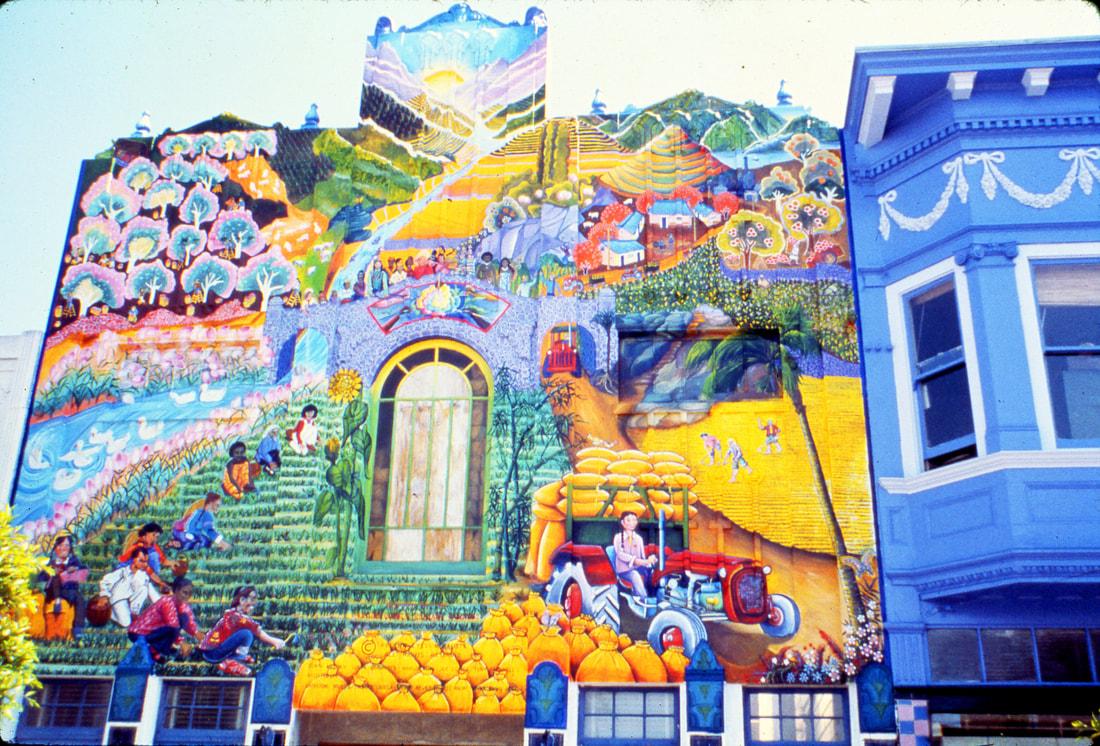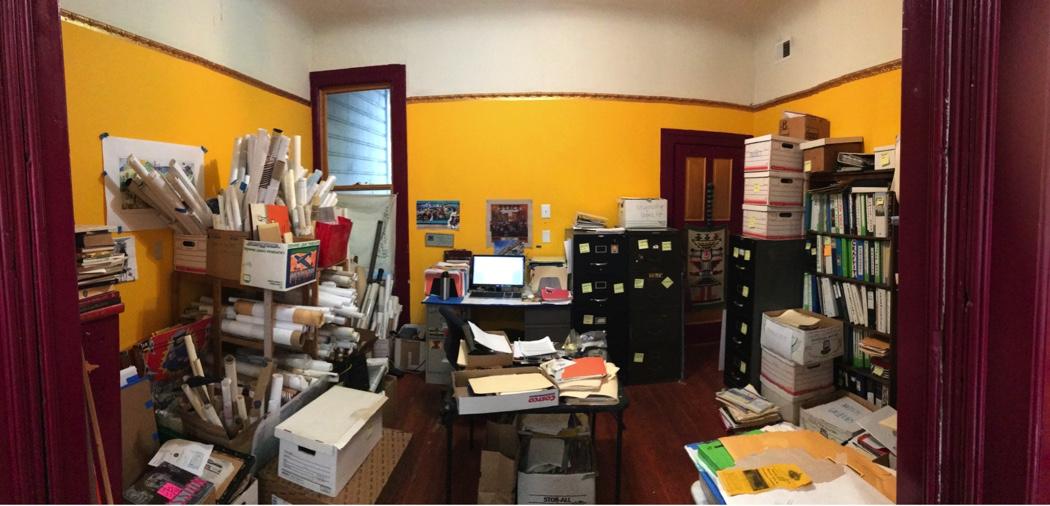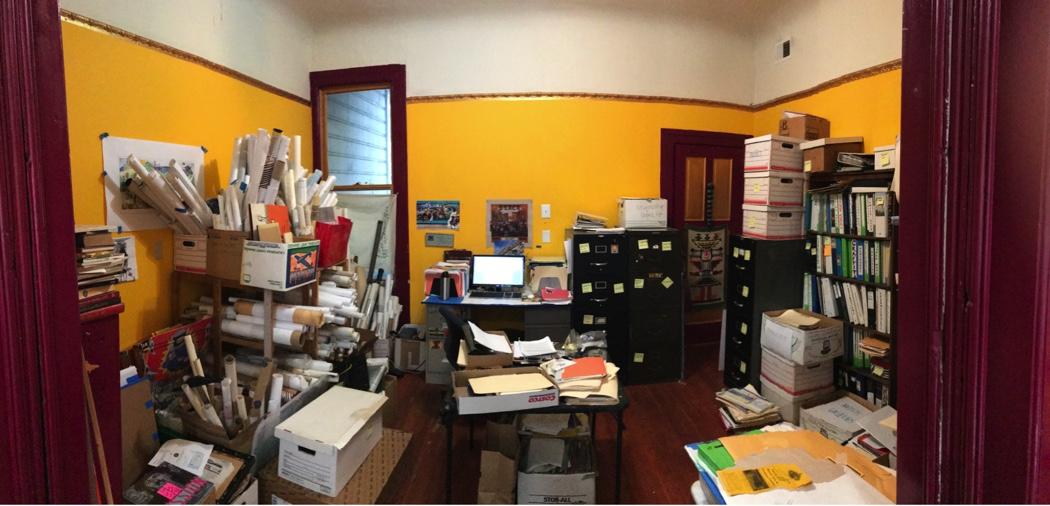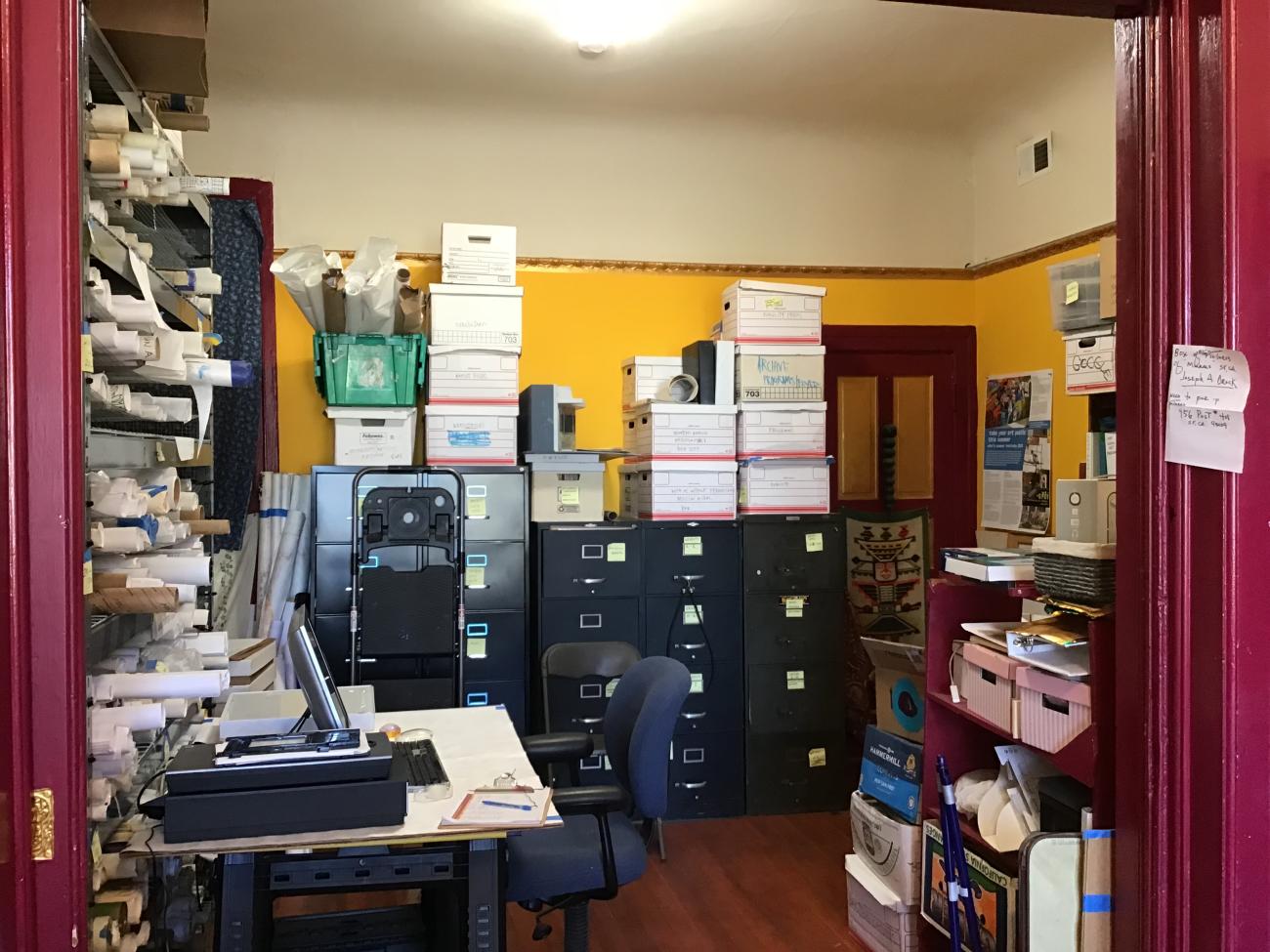From Community Walls to Filing Cabinets: Organizing and Preserving the Precita Eyes Muralists Association Archive

“The Primal Sea,” painted 1980, Susan Cervantes in collaboration with the community, Garfield Square/Pool. All mural images can be found at precitaeyes.org.

“The Primal Sea,” painted 1980, Susan Cervantes in collaboration with the community, Garfield Square/Pool. All mural images can be found at precitaeyes.org.
Since its founding by Susan and Luis Cervantes in 1977, Precita Eyes Muralists Association has created and maintained hundreds of murals throughout the Mission District in San Francisco, California. Through collaboration with communities there, Precita Eyes has contributed to the area’s uniquely dense collection of murals, securing the neighborhood’s historical status as the “cultural heart of the Chicano movement in California.” The murals, which adorn the walls of laundromats, elementary schools, and healthcare centers, blend traditions and styles from ancient Central America, early twentieth-century Mexican muralist movements, and recent immigrants from across Latin America.
Bringing these murals to life generated reams of drawings, photographs, videos, contracts, and correspondence. Precita holds over 15,000 such items that document the initial sketches, community contributions of ideas and paintwork, and completion of more than 540 murals. Two NEH Preservation Assistance Grants for Smaller Institutions, one in 2016 and another in 2019, have helped the group take important steps in organizing and preserving this valuable archive.
Precita’s records have been the source material for educational programs for youth and adults, local walking tours in Spanish and English, and publications on the Mission School art movement that can be found in many San Francisco museums and bookstores. With proper organization and preservation, its archive will provide scholars and members of the public with opportunities to better understand the cultural history of community murals, immigrant art, and the Mission District. Crucially, the archive’s original sketches and photographs also make it possible to accurately restore historically and culturally important murals throughout the community when weather and human activity damage them over time. In recent years, the group’s efforts at preserving its archival collections have become even more urgent. Gentrification means that the neighborhood is changing rapidly—some murals have already been whitewashed and others are endangered. As Precita explained in its application, if the archive remains, it can continue to remind “the artists and thousands of adults and kids who have created the murals who we are, where we came from and what we believe.”
With its first Preservation Assistance Grant in 2016, Precita hired conservator and archivist Dr. Cornelia Bleul-Gohlke and two graduate student interns in Museum Studies. This team performed a preservation assessment, which involved first examining Precita’s storage capabilities and then determining which items were of archival significance. Finally, Dr. Bleul-Gohlke and her team developed a plan for improving Precita’s systems of storage, organization, and public access. In 2019, a second grant made it possible for Precita to begin implementing the preservation plan by purchasing shelving, storage boxes, and environmental monitoring materials like smoke detectors and water alarms. It also hired the consultant Julio Enrique Badel, who had first become familiar with the collection and preservation needs as an intern during the first grant. Thanks to these grants and the work of Precita’s staff, fragile images are now rolled in protective cases, project files are organized chronologically for easy research access, and other documentation materials are categorized and boxed. In addition to completing this work, Badel trained Precita staff on proper storage and inventory so that as new murals are painted, their documentation can be added to the collection.
Preservation Assistance Grants help smaller institutions like Precita Eyes Muralists Association access the knowledge and equipment they need to both preserve and provide access to important local, national, and transnational histories. They connect students in archival and museum work with mentors, local institutions, and new skills. And, as in Badel’s case, these institutional relationships can be long-lasting. As newly trained staff carry forward Precita’s preservation efforts, the murals that signify the culture, history, and spirit of the Mission District will live on, both in newly organized boxes and file folders and on the neighborhood’s brightly colored walls.
Chelsea D. Chamberlain is a summer intern in the NEH Division of Preservation and Access and a PhD candidate in History at the University of Pennsylvania. She studies the history of disability, childhood, and citizenship in the nineteenth- and twentieth-century United States.







